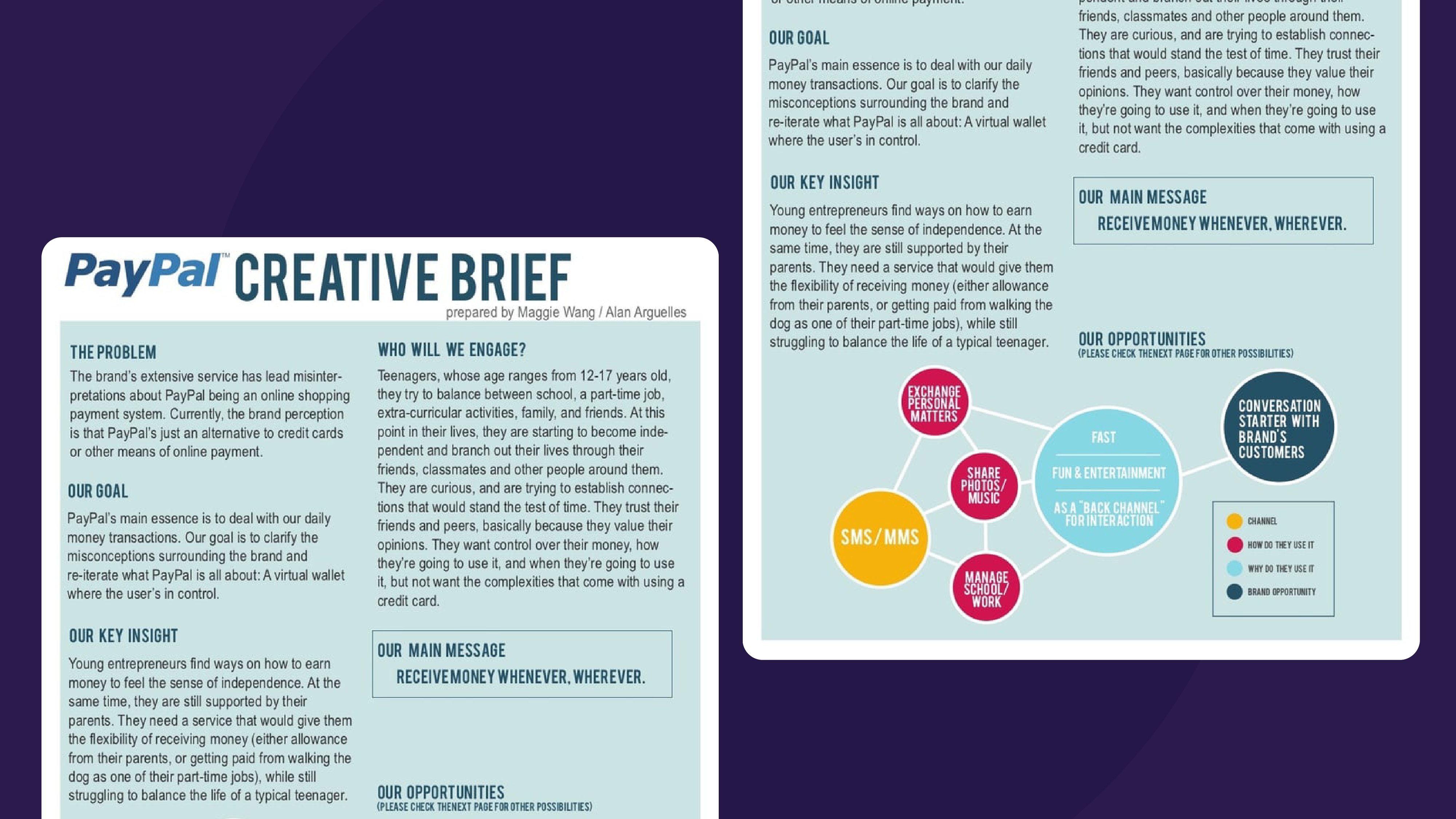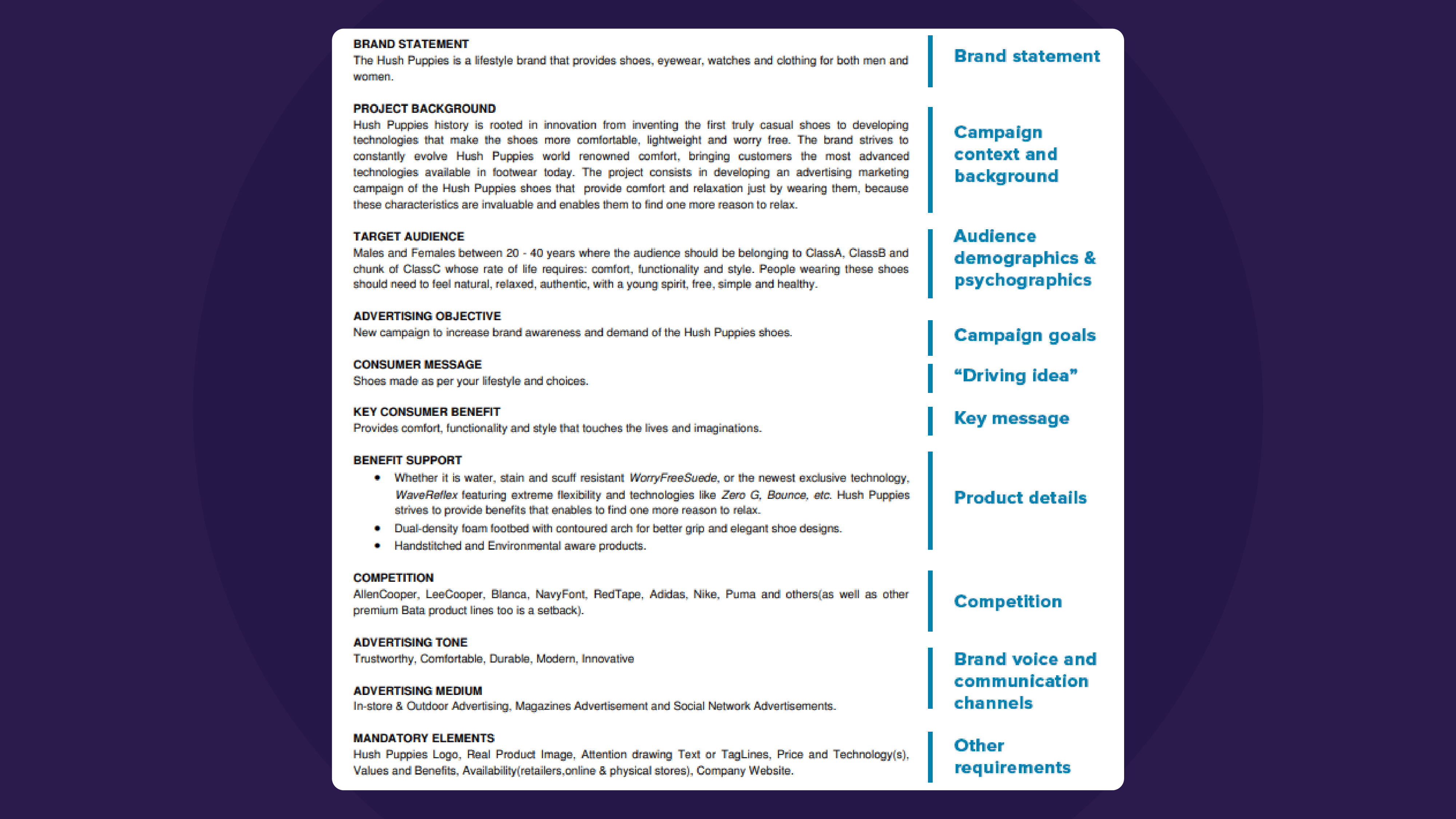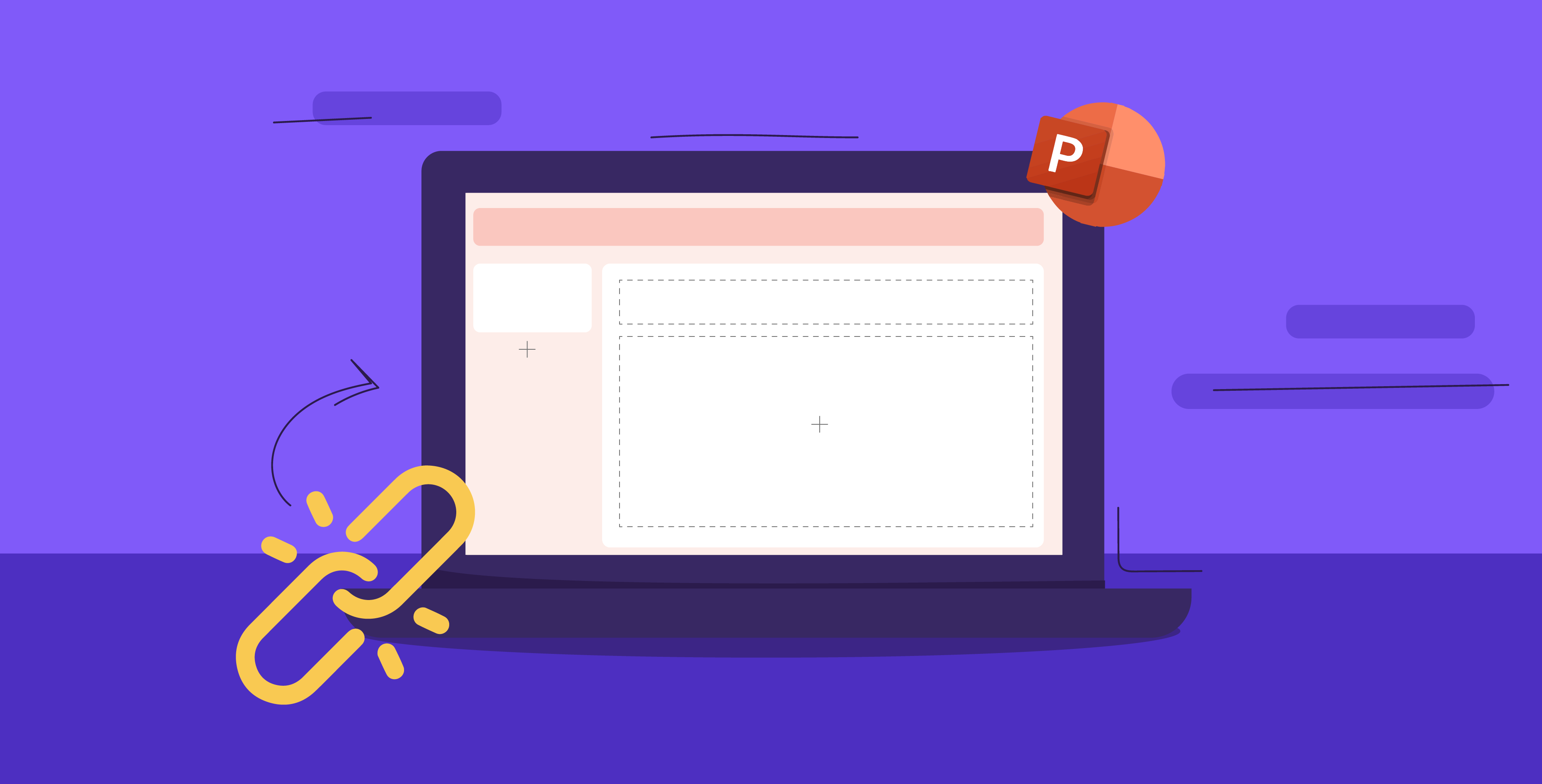29 September 2024
There are many moving parts in a design project from developing ideas, brand assets, the budget, timeline, etc. Unless the client and designer agree on all the details beforehand, they will be tricky to juggle and keep up with. Here’s where the design brief comes in, giving all those involved a blueprint to work with and covering all the background information needed.
In this blog, we’ll be discussing how to develop a design brief that is effective and useful for designers, and optimized for the best possible results.
We even have a free template to get you started! Read to the end of this article to download your own customizable template with all the main sections of a design brief.
What is a design brief?
A design brief is a document that outlines all the essential details of a project. It addresses the strategy, scope, and constraints of a project. It informs the workflow, pace, and decisions involved throughout since it covers all the main components of a creative project including the main vision, inspiration, and branding guidelines. The brief also outlines an agreement on the budget and timeline. It is a document that helps both the client and designer decide and agree on how the final product will look.
Why is a design brief important?
When you provide a design brief, you lay out all your ideas for the designers to better understand your project and vision. Describing your industry, company, culture, and project gives designers a blueprint to follow.
Designers will usually not know your industry or company. By providing context and explaining your project, background, and interests, they get insight into your objectives and can begin brainstorming.
For example, PayPal’s creative brief aims to simplify and explain its services to younger users who might be new to handling financial transactions. Its main message is highlighted in the end, and any content designed will connect to and communicate that initial message.
Who writes the design brief?
Often, a company director, marketing manager, executive, or director writes the design brief. Although knowing how to write a design brief is helpful for startup founders and small business owners as well.
What sort of projects are design briefs used for?
Typically, a client writes a design brief to plan projects such as branding, website development, architecture, e-commerce, and any design-related industry. It will make the process much easier when they can describe their perspective and give insight into what they imagine the project to be.
What is the ideal length of a design brief?
A design brief is a short document, usually a page or two. They specify the overall project’s needs and outline how to achieve them.
What does a powerful design brief include?
The document should have an overview section that clearly outlines the design project. A good design brief should consider the project’s target audience and competitor information. Ask yourself what the project needs from both practical and creative perspectives. What is the purpose here? What are you aiming to accomplish or solve?
Your brief should cover the following details:
An overview of the business and project
First and foremost, the main feature of a design brief is the context of the client and company. What do you do? What is your industry? What is your role within the company or the company’s role within the industry? What makes you different from those in your industry? What are your company’s values and mission?
Your design brief should provide an overview of the project and what it is meant to accomplish for you or your company, similar to how you would describe it in a business case.
Goals and objectives of the design project
Before beginning a design project, the client and designer must align on the goals and objectives of the project. There is a difference between goals and objectives, which is why it is necessary to outline both. A goal would cover the overarching aim of a venture while an objective is the measure of success for a goal. Discuss each point specifically to avoid confusion and make the roadmap clearer.
The target audience and market
Assess who your target audience is. Once you understand their demographics and psychographics, you can determine how the design should communicate the message. What are the ages and genders of your audience? Are they in a particular region or industry? What problem do they face that this project could solve? How would they use your product or service?
The competition
Competitor information helps simplify the industry’s landscape. With an in-depth competitor analysis, a design brief can map out a clearer picture of its strategy. The brief should elaborate on the ways the project aims to stand out from the competition.
Project design information
It is not expected of a client to give creative direction, but there are elements in a design brief that would offer the designer much help such as brand guidelines, references, and mood boards. Fonts, colors, or personalities coherent with the brand’s visual identity help guide the designer through working with a cohesive and relevant style that suits the client.
Project deliverables
One of the purposes of a design brief is for a client and designer to align on a project’s deliverables. When unaddressed, many misunderstandings could arise that only creates delays for everyone involved. Agree on what formats, sizes, aspect ratios, and image resolutions of the content you expect to receive by a certain deadline.
Project timeline
One of the most important things to clarify before starting a project is the project timeline. Know if the designer’s schedule can accommodate your requirements within the desired timeframe. Agree on a realistic and flexible timeline by deciding when the project could begin and end and whether the designer is available throughout that period.
Project budget
One of the most crucial sections of a design brief is the part that covers the design project’s budget. Set expectations and constraints early regarding the budget and whether or not this includes the testing costs. Establish where there could be flexibility in the budget and be realistic with the project costs.
Project approval
Finally, this is the section that details the contributors and stakeholders involved in a project and the roles they play. This is to determine a point of contact with the designer as well as a person in charge of signing off on the deliverables. Here, all of the team members involved in the project are listed along with their details and contact information. Make clear who the point of contact is and mention those involved in the review and approval process for the project.
This creative brief by Hush Puppies is a strong example of an ideal brief where all the primary concerns a designer could have is covered, from the background, target audience, and objective.
Design brief mistakes to avoid
When developing your brief, there are two qualities it must have: clarity and comprehension. When you neglect these aspects, you end up with a confusing and incomplete document. Keep in mind these common brief writing mistakes:
Being indecisive. Know what you want and when. Decide on practical details such as the deadline and budget to avoid misunderstandings later.
Not knowing who you’re targeting. You know your audience better than the designer does. Elaborate on who you are aiming the content at.
Too many details and descriptions. There’s no need for a brief to be so airtight and specific. You limit the final product when the designer cannot maneuver or be creative.
Design brief examples and templates
As a design agency, we have gone through hundreds of design briefs: the good, the bad, and the godsends. Throughout the years, we learned what makes a brief practical for our designers and what inhibits them from creating their best work. So we’ve developed an ideal template that covers all the necessary elements of a good design brief.
The introduction is to share the basic details of a creative project such as the name, projected timeline, and budget.
Then it covers three sections that provide an overview of what the designer will need to proceed with the project. First are the contact details for the person managing the project, the company, and the middle management between the agency and the project’s team.
And it gives space to describe the project details to discuss the project’s objectives and messages. It also explains the project’s intended audience and mentions any available assets used or referenced by the designer.
Finally, the last section covers the project deliverables. This section is where the client and designer agree on the items to be delivered from videos, logos, ads, or other designs. It’s also good to clarify the deliverables that are of high priority and are the most urgent.
Fill in the template to plan your design project including all the primary creative and tonal components. Begin describing your project using the layout we’ve created to produce a powerful and effective design brief.
Download Design Brief Template








